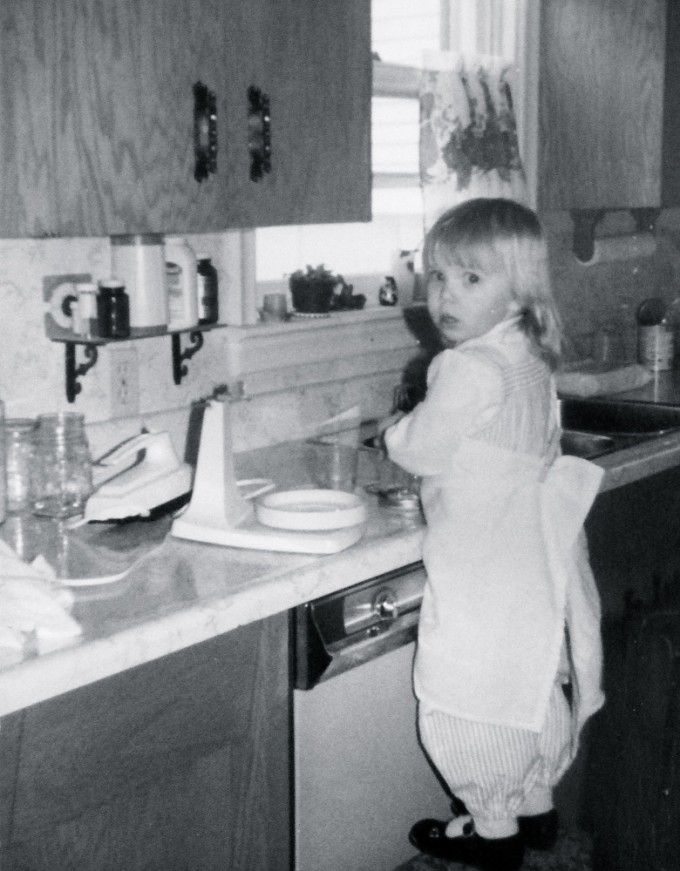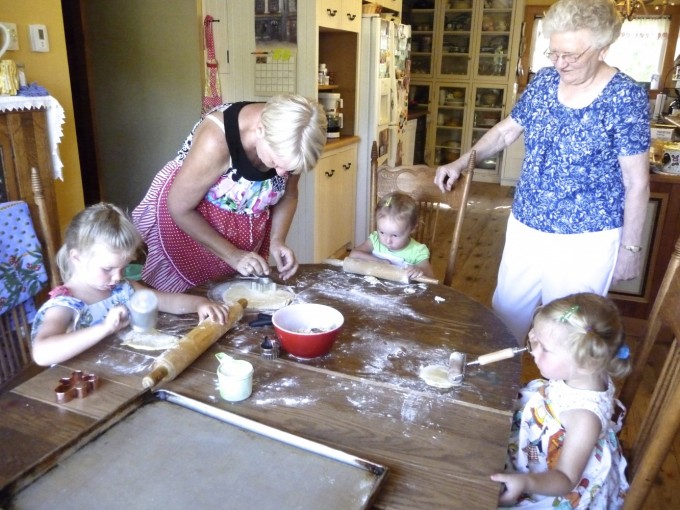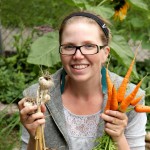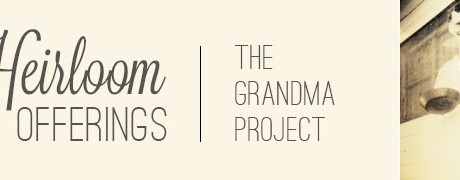This offering to Heirloom Offerings :: The Grandma Project was contributed by Maria Epp. Are you interested in sharing? Read our submission guidelines and get started.
Growing up, I spent a lot of time with my Grandma. She loved to share her skills with us in baking, sewing, crocheting, preserving and house-keeping. Now that I live far away from her, I cherish those childhood memories that much more.

Maria learning to bake in Grandma’s kitchen

- 1 package yeast
- 2 cups warm potato water
- 4 cups milk
- 2 eggs
- 2 level tbsp. salt
- 1 cup shortening (or bacon fat)
- 1 cup margarine
- Sprinkle yeast into warm water, cover and let stand 10 minutes.
- Scald milk.
- Beat eggs well, and after milk has cooled somewhat, add eggs and salt slowly.
- When still warm, add yeast mixture and beat in enough flour to make sponge.
- Cover and let rise until light, 1 to 1 1/2 hours in warm place, free from draft.
- When light add shortening, which has softened at room temperature, and enough flour to make a smooth elastic dough.
- Knead well.
- Cover and let rise until double in bulk, punch down and let rise again.
- Punch down and set buns on greased cookie sheets (You pinch off round pieces, and after your pan is filled you pinch off somewhat smaller pieces and put these on the first bun, and put your thumb in the centre right down, to hold these two balls together.)
- Let rise until light and bake in 375°F oven for 20-25 minutes.
{Kris}: I love that Maria’s family recipe can get a quick whole foods boost without compromising the recipe by simply using butter in place of margarine, sea salt instead of table salt, and perhaps experimenting with different flours.

{Kris}: Those photos are oozing with sweetness! What a special experience for your girls to bake with their great grandmother and carry on the traditions of your family. Our family bread tradition is for all the women to gather to make paska (easter bread) each year. Thank you for sharing this!
Share your family’s traditional foods in the comments. What do you remember your grandmother (or other significant person in your life) making when you were a child?

You don’t mention the butter in the mixing of the recipe but it’s in the ingredient list. Is it one cup of shortening only or both?
Also what are the approximate cups of flour?
What determines a sponge?
The thickness?
Thanks!